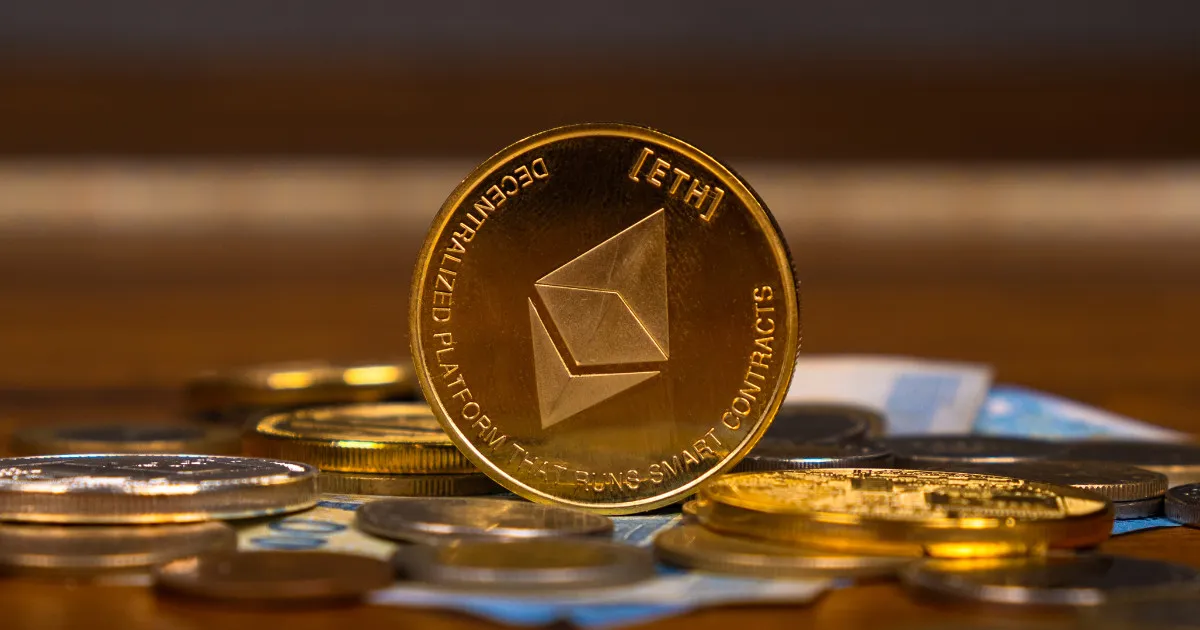Ethereum co-founder Vitalik Buterin and developer Anders Elowsson have introduced EIP-7999, a transformative proposal designed to streamline Ethereum’s complex transaction fee structure through the establishment of a unified multidimensional fee market. Released in early August 2025, this proposal represents one of the most significant potential changes to Ethereum’s economic model since the landmark EIP-1559 upgrade.
The proposal seeks to establish a unified multidimensional fee market, allowing users to specify a single aggregate maximum fee for multiple network resources. This revolutionary approach would eliminate the current need for users to estimate and manage multiple fee components when submitting transactions, instead enabling them to specify one comprehensive maximum fee that covers all transaction requirements.
Build the future you deserve. Get started with our top-tier Online courses: ACCA, HESI A2, ATI TEAS 7, HESI EXIT, NCLEX-RN, NCLEX-PN, and Financial Literacy. Let Serrari Ed guide your path to success. Enroll today.
The proposal is described in technical documentation as a way to “simplify fee management by letting users specify a single max_fee across multiple transaction resources, improving capital efficiency and user experience.” The Ethereum Improvement Proposal is currently under community review and discussion ahead of potential implementation, marking a critical juncture in Ethereum’s ongoing evolution.
Technical Innovation: From Multi-Layered to Unified Fee Architecture
EIP-7999 represents a fundamental paradigm shift from Ethereum’s current multi-layered fee system, where users must set separate fees for gas computation, blob data storage, and other network resources. Under the proposed system, users would interact with a single max_fee parameter that automatically covers all transaction resources, including computation, storage, and data blobs.
The protocol would then dynamically allocate this total fee pool to cover actual costs incurred across different resource dimensions, significantly reducing the risk of failed transactions due to misallocated fee budgets. This approach addresses one of the most persistent user experience challenges in the Ethereum ecosystem: the complexity of accurately estimating multiple fee components for different types of transactions.
The multidimensional fee structure allows the maximum fee set by users to be flexibly utilized across various network resources, meaning fees can be automatically allocated to computing, storage, or data resources as required by specific transactions. This dynamic allocation system promises to minimize capital waste while maximizing transaction success rates.
Addressing Ethereum’s Persistent Gas Fee Challenges
Ethereum’s gas fee complexity has been a persistent challenge since the network’s rapid expansion in 2017, when a surge in decentralized applications (DApps) and initial coin offerings (ICOs) led to unprecedented network congestion and soaring transaction costs. The situation reached critical levels during the 2021 DeFi summer and NFT boom, when average gas fees frequently exceeded $50 per transaction, creating significant barriers to entry for retail users.
In response to these challenges, Ethereum implemented the EIP-1559 upgrade in August 2021, which introduced a base fee burn mechanism and aimed to stabilize fee volatility. While this upgrade helped moderate extreme fee spikes, periods of high network congestion continued to result in volatile and sometimes prohibitive gas costs that deterred mainstream adoption.
To further address fee concerns, Layer 2 scaling solutions like Optimism, Arbitrum, and Polygon gained significant popularity by processing transactions off-chain before settling on Ethereum’s mainnet, effectively reducing costs for users. However, Ethereum’s mainnet fees remained a persistent concern, ultimately prompting the comprehensive development efforts that culminated in the Dencun upgrade implementation.
The Dencun Revolution: Dramatic Fee Reductions and Market Dynamics
The Dencun upgrade, implemented on March 13, 2024, introduced nine comprehensive Ethereum Improvement Proposals (EIPs) designed to enhance scalability and dramatically lower transaction costs, particularly for Layer 2 solutions. The upgrade introduced “proto-danksharding” through EIP-4844, creating a new type of temporary data storage called “blobs” that expires after 18 days.
Within one year of implementation, the impact has been transformative. Average gas fees for common transactions dropped by an unprecedented 95%, falling from approximately $86 to just $0.39 according to Etherscan data. This dramatic reduction has fundamentally altered the economic landscape of Ethereum interactions, making previously cost-prohibitive activities accessible to a broader user base.
Despite these substantial fee reductions, Ethereum maintained its position as the leading blockchain by transaction fee revenue in 2024, earning $2.48 billion—a 3% increase compared to 2023. This seemingly paradoxical situation demonstrates that lower fees stimulated significantly increased network activity, more than compensating for reduced per-transaction costs.
However, the competitive landscape has intensified considerably. Tron experienced explosive growth, with fees more than doubling to $2.15 billion, driven primarily by stablecoin transactions and high-frequency trading activities. Meanwhile, Solana posted an extraordinary 2,838% surge in fee revenue to $750 million, capitalizing on the memecoin boom and its ultra-low transaction costs.
Intensifying Blockchain Competition: Market Share Battle
The blockchain ecosystem has witnessed unprecedented competitive dynamics throughout 2024 and into 2025, with multiple platforms vying for user adoption and developer mindshare. According to comprehensive analysis by CoinGecko, the total blockchain fee earnings reached $6.9 billion in 2024, with Layer 1 blockchains recording $6.60 billion across 21 different networks.
Current Competitive Positioning (2025 Year-to-Date):
- Tron: $214.4 million in fees collected, leading the market
- Solana: $181.5 million, significantly ahead of Ethereum
- Ethereum: $128.2 million, falling to third place
- Bitcoin: $16.1 million, on track for $255.5 million annually
- BNB Chain: $12 million, projecting $185.7 million for 2025
This dramatic shift in competitive positioning represents a fundamental change from previous years when Ethereum dominated fee generation. Tron’s leadership stems from its focus on high-throughput, low-cost transactions that appeal to stablecoin users and DeFi applications prioritizing transaction volume over complex smart contract interactions.
Solana’s remarkable growth trajectory has been fueled by its ability to offer near-zero transaction costs (approximately $0.0001 SOL or $0.02) combined with high-speed processing capabilities. This combination has made Solana particularly attractive for gaming applications, NFT trading, and high-frequency DeFi activities where transaction costs significantly impact user behavior.
Layer 2 Ecosystem Development: Scaling Solutions Gain Momentum
The success of Ethereum’s scaling strategy has become increasingly evident through the performance of Layer 2 networks, which collectively earned $294.92 million across 12 different platforms in 2024. Base, Coinbase’s Layer 2 solution, has emerged as a standout performer, tripling its quarterly fee earnings from $6.38 million in the second half of 2023 to $21.20 million in 2024.
Notable Layer 2 Performance Metrics:
- Arbitrum: $44.10 million in 2024 fees, though representing a 30.1% decrease from 2023’s $63.12 million
- Base: Tripled earnings with strong retail adoption and Coinbase integration
- Optimism: Recorded modest 1.9% growth to $37.97 million
- Linea: Achieved 62.0% growth to $39.20 million, benefiting from mainnet launch timing
The Layer 2 ecosystem’s evolution reflects Ethereum’s successful transition toward a rollup-centric roadmap, where the mainnet serves as a settlement layer while Layer 2 solutions handle the majority of user transactions. This architecture has proven effective in maintaining Ethereum’s security guarantees while dramatically improving scalability and cost efficiency.
EIP-7999 Market Impact: Potential Economic Implications
The introduction of EIP-7999 could significantly influence market sentiment and user adoption patterns, particularly if implementation leads to lower transaction costs and smoother fee estimation processes. Beyond immediate user experience improvements, the proposal aligns strategically with Ethereum’s long-term scaling objectives by decoupling resource pricing mechanisms.
Potential Benefits for Stakeholders:
For Users:
- Simplified transaction experience with single fee estimation
- Reduced risk of transaction failures due to inadequate fee allocation
- Improved capital efficiency through optimized fee utilization
- Enhanced predictability in transaction costs
For Developers:
- More efficient creation and deployment of decentralized applications
- Reduced complexity in wallet integration and user interfaces
- Better resource management capabilities for complex smart contracts
- Finer control over network constraints without sacrificing decentralization
For the Ethereum Ecosystem:
- Potential increase in user adoption due to simplified interactions
- Competitive advantage against alternative blockchain platforms
- Strengthened position in institutional and enterprise adoption
- Foundation for more sophisticated fee structures in future upgrades
One decision can change your entire career. Take that step with our Online courses in ACCA, HESI A2, ATI TEAS 7, HESI EXIT, NCLEX-RN, NCLEX-PN, and Financial Literacy. Join Serrari Ed and start building your brighter future today.
Technical Architecture: Implementation Challenges and Solutions
The implementation of EIP-7999 involves sophisticated technical considerations that extend beyond simple fee calculation modifications. The proposal builds upon previous research, including EIP-7706 and gas normalization studies, creating a comprehensive framework for multidimensional resource pricing.
The unified fee market mechanism requires careful calibration to ensure optimal resource allocation across different transaction types. Smart contracts with varying computational, storage, and data requirements must be accommodated within a single fee structure without creating inefficiencies or security vulnerabilities.
Anders Elowsson, co-author of the proposal, has emphasized the importance of maintaining backwards compatibility while introducing these fundamental changes. The implementation strategy must ensure that existing applications and infrastructure can transition smoothly to the new fee model without disrupting ongoing operations.
Community Response and Developer Sentiment
The cryptocurrency community has responded positively to the EIP-7999 proposal, recognizing it as a significant advancement in Ethereum’s user experience and scalability infrastructure. Industry analysts view the proposal as addressing long-standing criticism about Ethereum’s complexity compared to competing platforms.
Binance’s on-chain analyst Murphy noted that “new buyer demand might advance the development process, reinforcing Ethereum’s demand fundamentals despite the evolving fee structure.” This sentiment reflects broader market expectations that simplification could drive increased adoption and network utilization.
The proposal has generated substantial discussion within developer communities, with many emphasizing the potential for reduced barriers to entry for new users and simplified integration for existing applications. Wallet providers and DeFi protocols have expressed particular interest in the proposal’s ability to streamline user interfaces and reduce support burdens related to fee estimation errors.
Historical Context: Evolution of Ethereum’s Fee Mechanisms
Understanding EIP-7999’s significance requires examining Ethereum’s fee mechanism evolution over time. The original gas model, introduced at Ethereum’s launch in 2015, provided a straightforward relationship between computational complexity and transaction costs. However, as the network evolved to support diverse use cases including data storage, complex DeFi protocols, and Layer 2 interactions, this simple model became increasingly inadequate.
The EIP-1559 upgrade represented the first major evolution, introducing the base fee burn mechanism and priority fees. While successful in providing more predictable fee estimation and creating deflationary pressure on ETH supply, it did not address the fundamental complexity of managing multiple resource types within a single transaction.
EIP-7999 represents the natural next step in this evolution, acknowledging that modern Ethereum usage requires more sophisticated approaches to resource pricing and allocation. The proposal’s multidimensional approach reflects lessons learned from years of network operation under various market conditions.
Competitive Analysis: Ethereum vs. Alternative Platforms
The timing of EIP-7999’s introduction is particularly significant given intensifying competition from alternative blockchain platforms. Solana’s success in attracting users through ultra-low fees and high throughput has demonstrated market demand for simplified, cost-effective blockchain interactions.
Comparative Fee Structures:
- Ethereum (Current): Complex multi-parameter fee estimation, $1-20 typical costs
- Solana: Flat fee structure, approximately $0.0001-0.02 per transaction
- Tron: Volume-based pricing, particularly attractive for stablecoin transfers
- BNB Chain: Predictable fee structure, moderate costs with BSC integration benefits
EIP-7999 aims to bridge the gap between Ethereum’s security and decentralization advantages and the user experience simplicity offered by newer platforms. Success in implementation could help Ethereum maintain its leading position while addressing competitive disadvantages in user experience.
Future Implications: Beyond Fee Simplification
The successful implementation of EIP-7999 could enable more sophisticated fee structures in future Ethereum upgrades, supporting the network’s evolution toward a truly multidimensional execution layer. The proposal creates a foundation for advanced features including:
Dynamic Resource Markets: Real-time pricing adjustments based on network congestion and resource availability across different dimensions.
Predictive Fee Estimation: Machine learning-powered fee prediction systems that can more accurately estimate total transaction costs.
Cross-Layer Optimization: Improved integration between Layer 1 and Layer 2 fee markets, enabling more efficient resource allocation across the entire Ethereum ecosystem.
Enterprise Integration: Simplified fee structures that make enterprise blockchain adoption more predictable and manageable.
Implementation Timeline and Next Steps
EIP-7999 currently remains in the community review and discussion phase, with no official implementation timeline announced. The proposal must undergo rigorous technical review, security auditing, and community consensus-building before potential inclusion in a future Ethereum upgrade.
The development process typically involves several phases:
- Community Review: Ongoing technical and economic analysis by Ethereum developers and researchers
- Security Auditing: Comprehensive review of potential security implications and edge cases
- Testnet Implementation: Deployment on Ethereum test networks for real-world testing
- Mainnet Integration: Inclusion in a major Ethereum upgrade following successful testing
Given the fundamental nature of the changes proposed, implementation would likely require coordination with a major network upgrade, similar to the Dencun deployment process.
Economic Modeling and Market Predictions
Financial analysts and blockchain economists are closely monitoring EIP-7999’s potential impact on Ethereum’s economic model and token dynamics. The proposal could influence several key metrics:
ETH Burn Dynamics: Changes to fee collection and allocation mechanisms may affect the rate of ETH burns through EIP-1559, potentially impacting token supply dynamics.
Validator Economics: Modified fee distribution could influence validator rewards and staking economics, affecting network security incentives.
DeFi Protocol Efficiency: Simplified fee structures may enable more efficient DeFi operations, potentially increasing Total Value Locked (TVL) and transaction volumes.
User Adoption Metrics: Improved user experience could drive increased network adoption, particularly among retail users and enterprise applications.
Risk Assessment and Potential Challenges
While EIP-7999 offers significant potential benefits, implementation involves several risk factors that require careful consideration:
Technical Complexity: The sophisticated resource allocation mechanisms require extensive testing to ensure reliability across diverse transaction types and network conditions.
Economic Disruption: Changes to fundamental fee mechanisms could temporarily disrupt existing applications and economic models built around current fee structures.
Competitive Response: Alternative blockchain platforms may accelerate their own development efforts in response to Ethereum’s improvements, intensifying competitive pressures.
Adoption Challenges: Users and developers must adapt to new fee estimation and transaction submission processes, requiring educational efforts and tooling updates.
Industry Expert Opinions and Analysis
Leading blockchain analysts have offered varied perspectives on EIP-7999’s potential impact. Some experts emphasize the proposal’s ability to address long-standing user experience challenges, while others note the complexity of implementing such fundamental changes to a live, high-value network.
Dr. Token Terminal analyst highlighted that “EIP-7999 represents exactly the kind of innovation Ethereum needs to maintain its competitive edge while preserving the security and decentralization properties that make it valuable for institutional adoption.”
Conversely, some analysts have expressed caution about modifying core economic mechanisms on a network securing hundreds of billions in value. These perspectives emphasize the importance of thorough testing and gradual implementation approaches.
Conclusion: A Pivotal Moment for Ethereum’s Future
EIP-7999 represents a potentially transformative development in Ethereum’s ongoing evolution, addressing fundamental user experience challenges while positioning the network for continued growth in an increasingly competitive blockchain landscape. The proposal’s success could significantly impact Ethereum’s ability to maintain its leading position while expanding accessibility to mainstream users and enterprise applications.
The unified fee market concept tackles one of blockchain technology’s most persistent adoption barriers: complexity in transaction cost estimation and management. By simplifying these interactions without compromising the network’s sophisticated capabilities, EIP-7999 could catalyze the next phase of Ethereum adoption.
As the proposal advances through the development and review process, its ultimate success will depend on careful implementation, thorough security analysis, and positive community reception. The stakes are significant, with Ethereum’s long-term competitiveness potentially hinging on its ability to evolve while maintaining the security and decentralization properties that have established it as the foundation of the decentralized web.
The coming months will prove critical as developers, researchers, and the broader Ethereum community evaluate EIP-7999’s technical merits and economic implications. Success could cement Ethereum’s position as the premier blockchain platform for complex applications, while providing the user experience improvements necessary to compete with newer, more streamlined alternatives.
For investors, developers, and users of the Ethereum ecosystem, EIP-7999 represents both an opportunity and a test of Ethereum’s ability to innovate under pressure. The proposal embodies Ethereum’s commitment to continuous improvement while highlighting the challenges inherent in evolving a live blockchain network that serves millions of users and secures tremendous value.
As Vitalik Buterin and the Ethereum development community continue refining this proposal, the broader blockchain industry watches closely, recognizing that successful implementation could establish new standards for blockchain user experience and economic design across the entire ecosystem.
Ready to take your career to the next level? Join our Online courses: ACCA, HESI A2, ATI TEAS 7 , HESI EXIT , NCLEX – RN and NCLEX – PN, Financial Literacy!🌟 Dive into a world of opportunities and empower yourself for success. Explore more at Serrari Ed and start your exciting journey today! ✨
Track GDP, Inflation and Central Bank rates for top African markets with Serrari’s comparator tool.
See today’s Treasury bonds and Money market funds movement across financial service providers in Kenya, using Serrari’s comparator tools.
Photo source: Google
By: Montel Kamau
Serrari Financial Analyst
6th August, 2025
Article, Financial and News Disclaimer
The Value of a Financial Advisor
While this article offers valuable insights, it is essential to recognize that personal finance can be highly complex and unique to each individual. A financial advisor provides professional expertise and personalized guidance to help you make well-informed decisions tailored to your specific circumstances and goals.
Beyond offering knowledge, a financial advisor serves as a trusted partner to help you stay disciplined, avoid common pitfalls, and remain focused on your long-term objectives. Their perspective and experience can complement your own efforts, enhancing your financial well-being and ensuring a more confident approach to managing your finances.
Disclaimer: This article is for informational purposes only and does not constitute financial advice. Readers are encouraged to consult a licensed financial advisor to obtain guidance specific to their financial situation.
Article and News Disclaimer
The information provided on www.serrarigroup.com is for general informational purposes only. While we strive to keep the information up to date and accurate, we make no representations or warranties of any kind, express or implied, about the completeness, accuracy, reliability, suitability, or availability with respect to the website or the information, products, services, or related graphics contained on the website for any purpose. Any reliance you place on such information is therefore strictly at your own risk.
www.serrarigroup.com is not responsible for any errors or omissions, or for the results obtained from the use of this information. All information on the website is provided on an as-is basis, with no guarantee of completeness, accuracy, timeliness, or of the results obtained from the use of this information, and without warranty of any kind, express or implied, including but not limited to warranties of performance, merchantability, and fitness for a particular purpose.
In no event will www.serrarigroup.com be liable to you or anyone else for any decision made or action taken in reliance on the information provided on the website or for any consequential, special, or similar damages, even if advised of the possibility of such damages.
The articles, news, and information presented on www.serrarigroup.com reflect the opinions of the respective authors and contributors and do not necessarily represent the views of the website or its management. Any views or opinions expressed are solely those of the individual authors and do not represent the website's views or opinions as a whole.
The content on www.serrarigroup.com may include links to external websites, which are provided for convenience and informational purposes only. We have no control over the nature, content, and availability of those sites. The inclusion of any links does not necessarily imply a recommendation or endorsement of the views expressed within them.
Every effort is made to keep the website up and running smoothly. However, www.serrarigroup.com takes no responsibility for, and will not be liable for, the website being temporarily unavailable due to technical issues beyond our control.
Please note that laws, regulations, and information can change rapidly, and we advise you to conduct further research and seek professional advice when necessary.
By using www.serrarigroup.com, you agree to this disclaimer and its terms. If you do not agree with this disclaimer, please do not use the website.
www.serrarigroup.com, reserves the right to update, modify, or remove any part of this disclaimer without prior notice. It is your responsibility to review this disclaimer periodically for changes.
Serrari Group 2025
















